Puerto Madero - Buenos Aires' Connection to the Water's Edge
![]()
Barrio Puerto Madero, a complex mosaic of recycled warehouses, gigantic apartment complexes, dramatic glass walled towers, pedestrian promenades, vast green spaces, and a wetland preserve, is now the most stunning, contemporary, dramatic barrio of Buenos Aires..
Visitors returning from an absence of 20 years would be astounded at Puerto Madero's transformation.
The renewal to its current form has only occurred in the last 20 years. Before that, BA's focus on westward expansion had left Puerto Madero virtually disconnected from the rest of the city. Located just a few blocks east of downtown, the old port lay decaying and ignored. Built between 1887 and 1897, the port had served the city for only two decades (below). By 1925, ships had outgrown the facilities and its replacement, Puerto Nuevo, had been built to the north. But the sturdy red brick warehouses stood the test of time and steadfastly waited to be rediscovered.
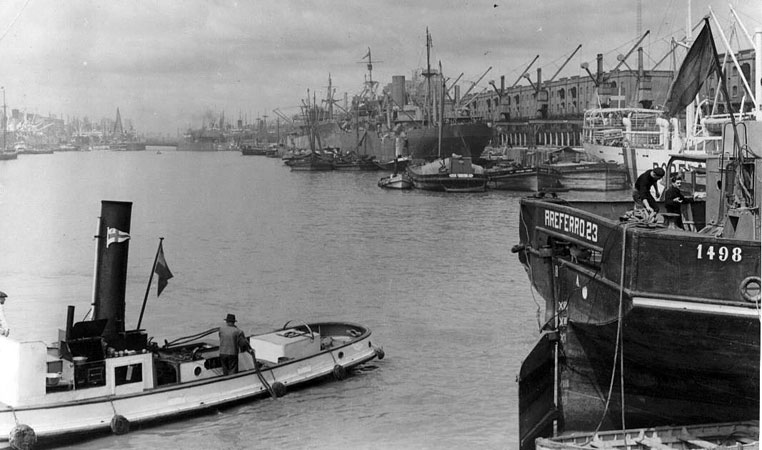
Historic pictures courtesy of Wikipedia
In the 1980s civic leaders saw that Puerto Madero could and should again become a viable part of the city. In 1989 they formed Corporación Antiguo Puerto Madero S.A. which gained jurisdiction over Puerto Madero and began the process of creating and implementing a Master Plan to revive, restore and rejuvenate the old abandoned riverside port area.
Today, the original four diques (docks or quays) overhung with freshly painted cranes, surrounded by water, retain the character of the old port. The rediscovered warehouse buildings house classy shops and restaurants, offices, residential lofts and the Universidad Católica Argentina.
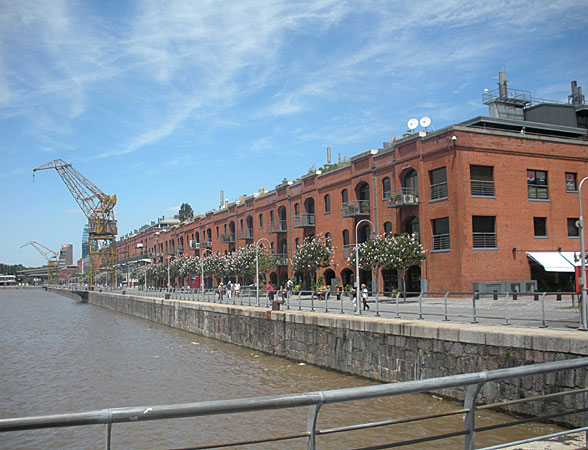
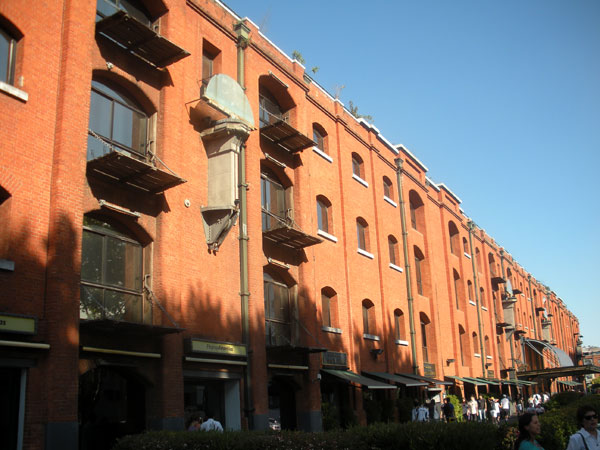
Across the water, on formerly vacant land (historic picture top left), gleaming new buildings have been built creating a twilight-zonish feeling of passage between then and now, a bit unsettling but not displeasing.
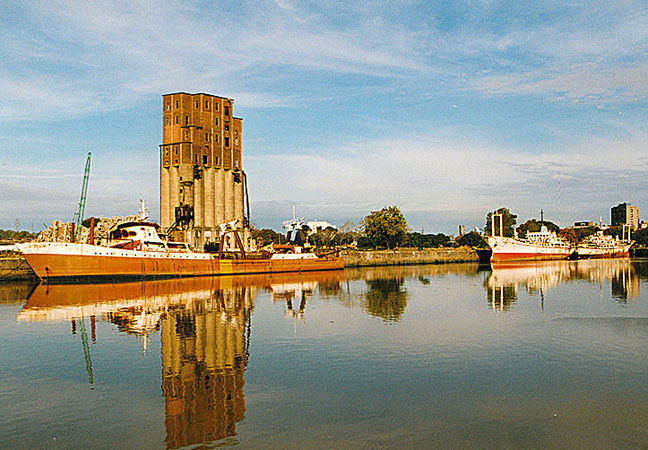
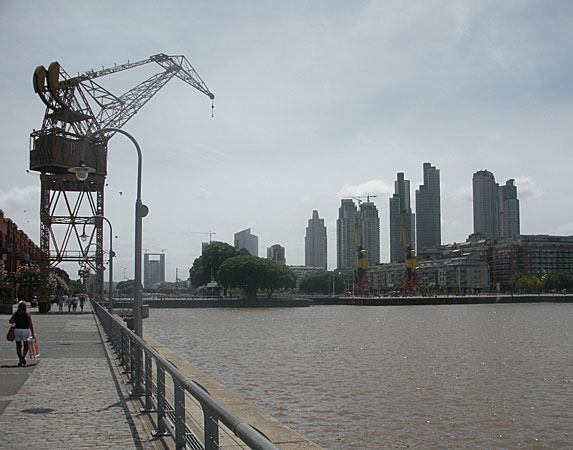
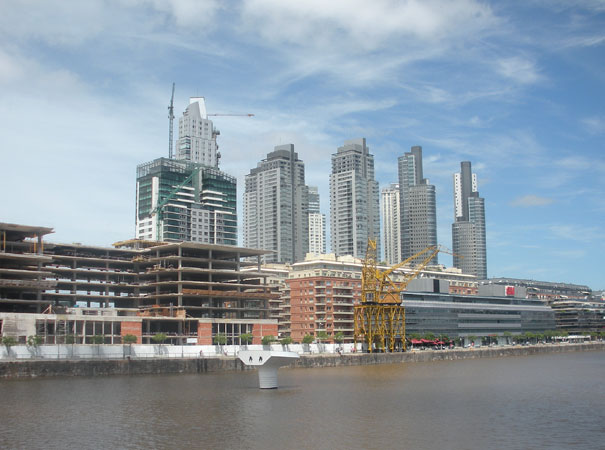
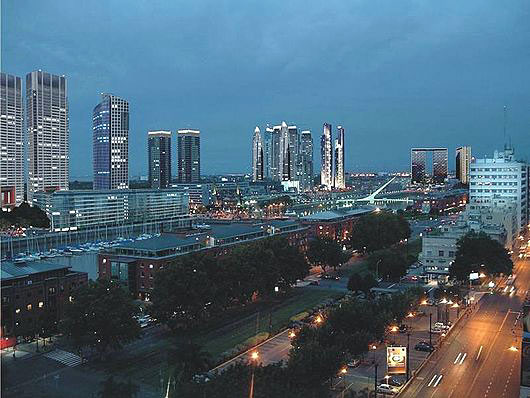
On a sunny Sunday afternoon, we joined dozens of portenos who had come to stroll, skate or jog along the promenades, We attempted to capture the juxtaposition of old and new, urban and green, that is Puerto Madero. Note the retention of the historic silo building (picture above), now surrounded by a park.
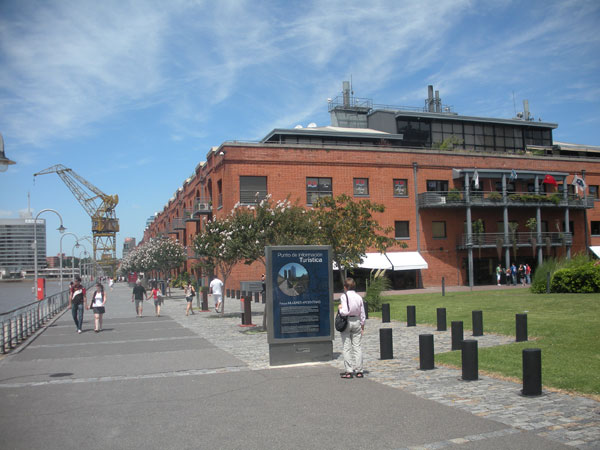
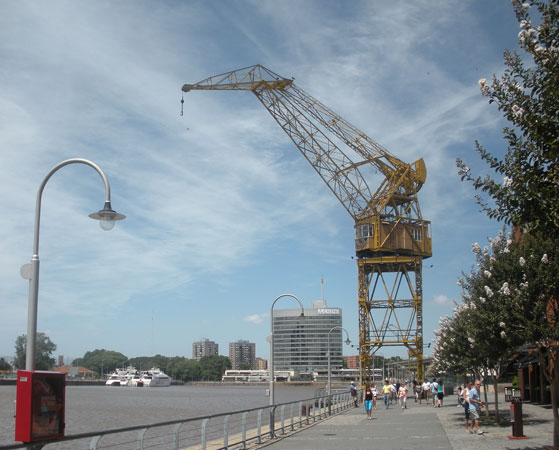
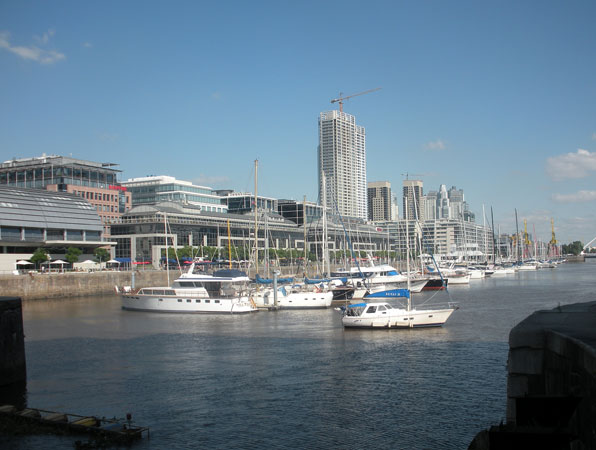
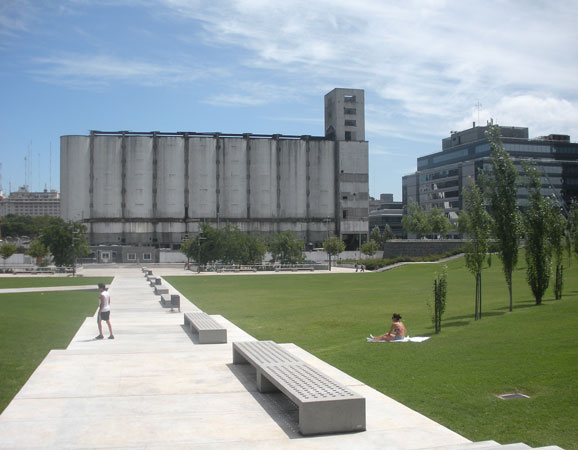
After walking across the dramatic bridge, designed by Santiago Calatrava, we found ourselves in front of the Aduana (Customs) Building, the very first building of the port.
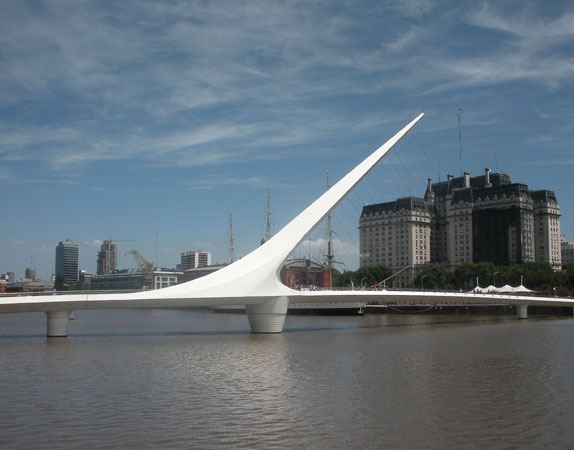
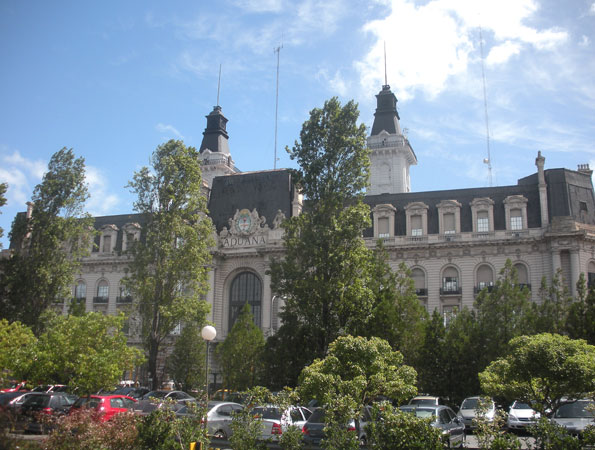
On another day, we returned for the arrival of the tall ships from other Latin American countries, the first big event of Argentina's yearlong celebration of the bicentennial of her independence. The old port had returned to its former glory days!
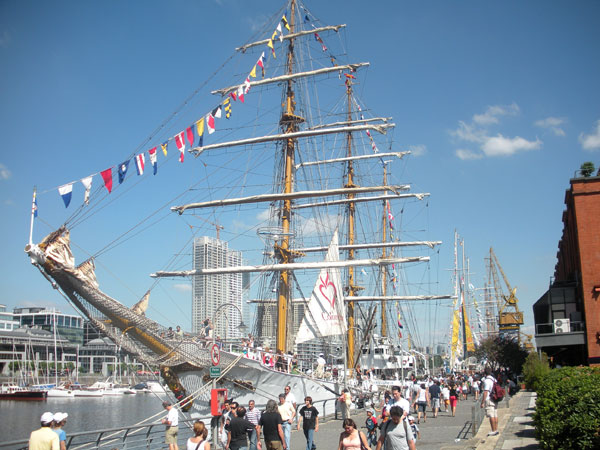
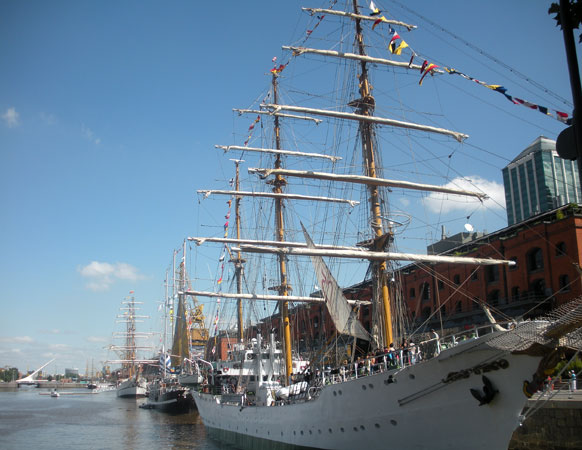
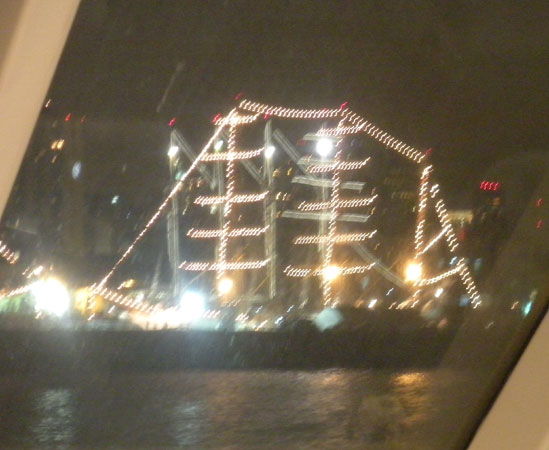
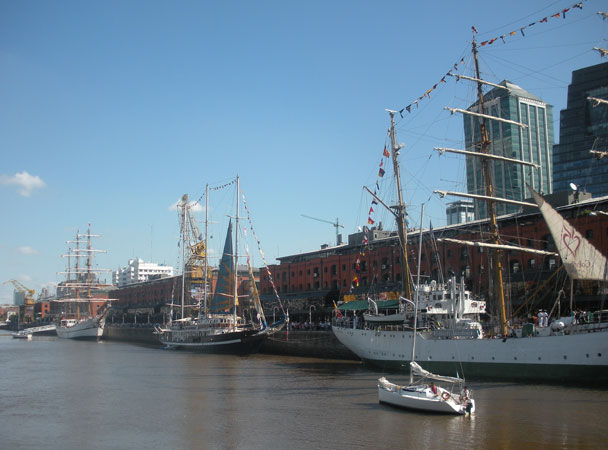
Some views again demonstrated the contrast of the old and the new.
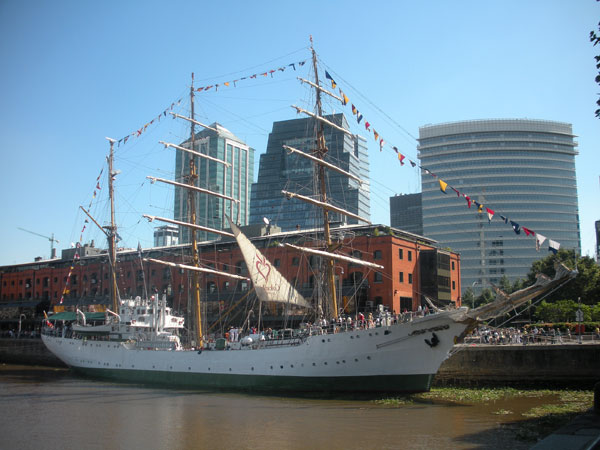
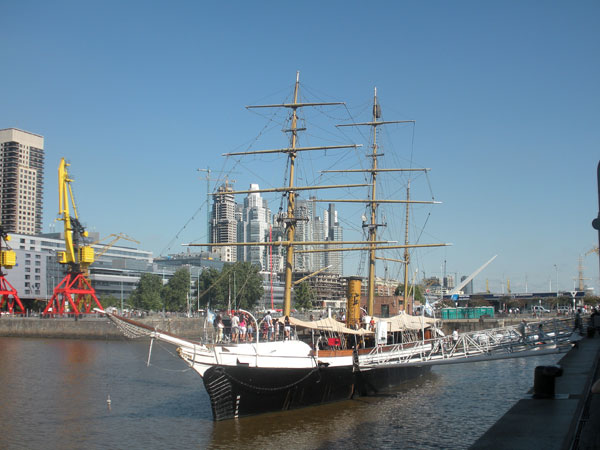
The revival of Puerto Madero enabled Buenos Aires to join other great cities - London, Barcelona, Baltimore and others - in a great rediscovery of once forgotten, obsolete and abandoned ports to enliven the urban fabric and restore the connections to their water's edge. We complement them for their efforts.
Click here to return to our Central and South America - Spring 2010 page
![]()